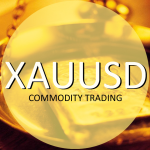Oct 29, 2022
VOT Research Desk
In the twenty-first century, trading in forex, also known as foreign exchange has become increasingly popular among lone retail investors who engage in both professional and amateur trading.
Although foreign exchange trade, or FX trading, has played a significant role in the overall banking system for decades, the average person has traditionally had no access to it.
Through the 20th century, private ownership of stocks, shares, and even government bonds grew more accessible, but it wasn’t until the rise of Contract for Difference trading into the 21st century that it became a practical trading alternative for the retail trader.
The exchange of one currency for another, often known as foreign exchange or currency trades or forex to FX trading, is what distinguishes currency trading from other asset classes. When you trade foreign exchange, you are hoping that the value of one currency will change in relation to another.
|
Forex pair |
Known as |
Central Bank |
|
EUR/USD |
The Euro |
European Central Bank (ECB) |
|
USD/JPY |
The Yen |
Bank of Japan (BoJ) |
|
GBP/USD |
Cable |
Bank of England (BoE) |
|
USD/CHF |
The Swissie |
Swiss National Bank (SNB) |
|
USD/CAD |
The Loonie |
Bank of Canada (BoC) |
|
AUD/USD |
The Aussie |
Reserve Bank of Australia (RBA) |
|
US Dollar |
The Dollar |
Federal Reserve |
Foreign exchange trading is a relative value trade, which means that you watch for one currency’s value to decline or rise in relation to another currency.
Therefore, choosing which currency we believe will appreciate in value and which currency we believe may depreciate in value is essential when trading currencies on the forex market. Some of the most popular currency combinations in the forex market are the Major Forex currency pairs.
The four traditional “Majors,” namely EUR/USD, USD/JPY, GBP/USD, and USD/CHF, will undoubtedly be included on any list of the “Majors,” even though there is no clear list of what they are.
Additionally, the two most often traded commodity currencies, USD/CAD and AUD/USD, rank sixth and seventh, respectively, on our list of the top six. NZD/USD might really rank seventh on the list. You’ll see that each of these Majors is actually a collection of other currencies measured against the US Dollar.
Let’s examine our most important forex currency pairs.
GBP/USD
The oldest currency still in use worldwide is the British pound. It is also the fourth most traded currency and the third most often used reserve currency (after the US dollar and the euro).
The Pound is unlikely to adopt the Euro any time soon because the UK will be exiting the EU in 2020 after Brexit.
The name Cable for the GBPUSD exchange rate, which stands for the Pound to US Dollar rate, originates from the 19th century, when a submarine cable was used to send the exchange rate across the Atlantic.
EUR/USD
The symbol for the amount of US Dollars required to buy one Euro is EURUSD. Since USD and EUR are the two most traded currencies internationally and the largest and second-largest reserve currencies, respectively, they are regarded as the most significant Forex pair.
Over 300 million people use the Euro, which was introduced in 1999 and has already supplanted 11 national currencies, in 19 different European nations.
The US Dollar is the world’s main reserve currency and controls trade internationally. The Federal Reserve, the nation’s central bank, regulates the flow of US dollars.
The US dollar continues to be a haven in times of crisis and the primary global reserve currency, despite predictions that it will eventually cede its dominant position to the Euro.
AUD/USD
The Australian Dollar, the official currency of the Australian Commonwealth since 1966, replaced the Australian Pound (which includes Australia, seven dependent territories and three countries).
The Australian Dollar (AUD) is currently one of the world’s most traded currencies (fifth behind USD, EUR, JPY and GBP). Iron ore, coal, petroleum gas, gold, and aluminum oxide are just a few of the basic commodities that the Australian economy produces and exports in significant quantities.
For this reason, the Australian Dollar is also referred to as a commodity currency, along with the Canadian Dollar.
USD/JPY
Another most traded currency worldwide and a well-liked reserve currency is the Japanese Yen.
Japan has a population that is almost 40% that of the US, and its economy is large. The supply of Yen is under the Bank of Japan’s authority. Even more than the US Dollar, the Yen is regarded as the ultimate safe-haven currency during times of global crisis.
This is due to a number of factors, including the historically low interest rates in Japan since the 1990s, demands on repatriation brought on by the country’s favorable net foreign asset position, and conventional and historical causes.
USD/CAD
The Canadian dollar, sometimes known as the loonie in the realm of foreign exchange trading, is the name of the one-dollar coin featuring a picture of the loon, a common bird in Canada.
Due to the close ties that exist between their economies as neighbors, the Canadian and US dollars have a strong correlation. Canada exports to the US 85% of its total output, while importing 50% of its total imports of goods and services.
Oil and lumber are two of Canada’s largest exports, and the price of oil is a key determinant in determining the value of the Canadian dollar. Because of this, the Canadian Dollar is included in a group of currencies known as commodity currencies.
USD/CHF
The currency code CHF, which stands for the Swiss Franc, is derived from Confederation Helvetica, an old Latin term for Switzerland.
The Swiss Franc is also referred to as the “Swissie” in the world of currency trading. The Swiss Franc is supported by significant gold reserves, making Switzerland’s economy one of the most prosperous and secure in all of Europe.
The Swiss have been reluctant to adopt the Euro or even enlist in the EU.
Along with its historical neutrality in regard to international wars, the Swiss Franc’s stability is one of the factors that make it a safe haven currency.









